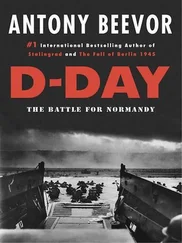1 ...8 9 10 12 13 14 ...27 D’Erlon also had the satisfaction of forcing some companies of the 95th Rifle Brigade — whose firepower was far more accurate over far longer distances owing to its employment of Baker rifles rather than muskets — out of the Sandpit to join the rest of their battalion behind the Wavre road. (It is an interesting fact of the Napoleonic Wars that other than the rifling of gun-barrels — which was in its infancy and which had the disadvantage of making reloading slower — there had been hardly any technological advance in firearms since the campaigns of Marlborough. The Brown Bess musket had been introduced in 1745, and a grognard of the Wars of Spanish Succession would have been perfectly at home working the muskets of 1815.) The fleeing Dutch and Belgians of von Bijlandt’s brigade fortunately had no effect on the morale of Picton’s 5th Division as it prepared to meet the onslaught of d’Erlon’s corps. The 5th was composed of the brigades of Major-General Sir James Kempt and Major-General Sir Denis Pack and Colonel von Vincke’s Hanoverian brigade. Of the 5,170 men who had marched out of Brussels with it two days earlier, no fewer than 1,569 had been lost at Quatre Bras. The remaining 3,600 — supported by two Hanoverian brigades to their left with a total of 5,000 men — faced a far larger number of Frenchmen. Yet this did not prevent General Picton, after his troops had fired a murderous volley at about one hundred yards’ range, from ordering a bayonet charge.
Picton himself was killed almost immediately afterwards, shot through the right temple with the words ‘Charge! Charge! Hurrah!’on his lips, as the brigades of Donzelot and Quiot clashed with Kempt’s, Marcognet’s with Pack’s, and Durutte attempted to deal with the Hanoverians. 4(It was only after Picton’s body was laid out at Brussels the day after the battle that it was discovered that he had received a severe contusion at Quatre Bras on 16 June that he had kept secret.)
‘Ninety-second, everything has given way on your right and left and you must charge this column!’ cried Pack. With cheers the 92nd Regiment — which had been reduced to only 220 men — responded to the call. The fixing of the bayonet is the work of a moment, and as one British officer recalled, ‘When the Scots Greys charged past the flanks of the 92nd, both regiments cheered, and joined in the heart-touching cry of “Scotland forever!’” For it was at this key psychological moment, when d’Erlon’s advance had seemed to lose its momentum, that Lord Uxbridge ordered a mass cavalry attack upon it.
Uxbridge had had a difficult relationship with Wellington ever since he had run away with Wellington’s sister-in-law (whom he did at least subsequently marry). Wellington nevertheless appreciated his abilities and appointed him to command the cavalry in the Waterloo campaign, albeit with the joke to another officer: ‘I’ll take good care he doesn’t run away with me!’ 5Uxbridge had served with distinction under Sir John Moore in the Peninsula, but had to give up the command of the cavalry when Wellington arrived there. This was to be the first time the two men had served together since the scandal. Apart from Wellington’s refusal to discuss his plans for the battle with his second-in-command, merely letting drop a few semi-sarcastic remarks, they got on well enough.
Wellington had been harsh about the cavalry arm in the Peninsula, once accusing it of ‘galloping at everything’ without proper thought to the consequences, and the charge of the Union and Household Brigades at Waterloo also gave him opportunity for criticism. At the moment of the initial attack on d’Erlon, however, Uxbridge’s action met with superb success as it charged through gaps in the hedge and around it to fall upon the French infantry.
The French cavalry protecting d’Erlon’s corps on its left flank were swept away by the Household Brigade. Now, totally exposed and caught by surprise, d’Erlon’s corps reeled from the combined onslaught of Picton’s division, Major-General Sir William Ponsonby’s Union Brigade (Royals, Scots Greys and Inniskillings dragoons) and, after their attack on the French cuirassiers, Lord Edward Somerset’s Household Brigade (1st and 2nd Life Guards and Royal Horse Guards). Uxbridge himself took the head of Somerset’s force. Within minutes d’Erlon’s men had broken and run back down the slope, utterly demoralised and leaving 2,000 prisoners behind them. Two eagle’ standards were captured, even though they were prized so highly in the French army as to have attained almost mythical status. Sergeant Charles Ewart of the 2nd North British Dragoons (‘Scots Greys’) captured the eagle of the 45th Line Regiment (Marcognet’s division), and Captain Alexander Clark-Kennedy of the Royal Dragoons took that of the 105th (Quiot’s division). (A third, that of the 55th Regiment, was also taken, but was recaptured soon afterwards.)
Sergeant Ewart later recalled how he captured the coveted French standard:
I took the Eagle from the enemy: he and I had a hard contest for it; he thrust for my groin — I parried it off, and I cut him through the head: after which I was attacked by one of their Lancers, who threw his lance at me, but missed the mark by throwing it off with my sword by my right side; then I cut him from the chin upwards, which cut went through his teeth. Next I was attacked by a foot soldier, who, after firing at me, charged me with his bayonet; but he very soon lost the combat, for I parried it, and cut him down through the head; so that finished the combat for the Eagle. 6
This was the point at which the British cavalry ought to have stopped, regrouped and returned to their posts. For many, however, this was their first battle experience, and instead, exhilarated by their success over d’Erlon’s corps, they disastrously charged onwards. In a sense, therefore, Uxbridge did indeed ‘run away’ with Wellington, or at least with a good proportion of his cavalry arm. Although they had some success in cutting down some gunners of the Grand Battery, Ponsonby’s Union Brigade went far beyond the point that the rest of the Anglo-Allied army was able to protect them. Despite Ponsonby and his staff’s efforts they could not halt their troops. It was said that one officer was heard to cry out ‘To Paris!’as he charged by.
French retribution was swift and merciless; spotting their opportunity, Jacquinot’s lancers and Farine’s cuirassiers attacked from both right and left and exacted a terrible toll on the British cavalry, killing or wounding one-third of their number. Ponsonby himself paid for his inability to rein back his over-enthusiastic troopers with his life, killed by a French lancer after he had surrendered.
Although Somerset’s Household Brigade also went on too far after dispersing d’Erlon’s corps, it reined in long before Ponsonby had done. The cavalry retreat was covered by Major-General Sir John Vandeleur’s 4th Cavalry Brigade and Ghigny’s Belgian and Dutch Light Dragoons, who managed to repulse bodies of French lancers that were chasing troopers of the Scots Greys back to the British lines. Of the 2,500 cavalry who had charged, over a thousand did not return.
Captain Tomkinson of the 16th Light Dragoons recorded the destruction in his Diary of a Cavalry Officer·.
Towards the close of the evening the whole brigade did not form above one squadron … There was one squadron of the 1st Dragoon Guards in which not above one or two returned. They rode completely into the enemy’s reserve, and were killed. The enemy, I suspect, did not spare a single prisoner who fell into their hands. It is impossible to suppose a whole squadron killed without one man surrendering. 7
Although the aftermath had been disastrous — the Union Brigade’s remaining strength meant that it could not contribute further as a functioning unit — nonetheless d’Erlon had been completely and demoralisingly repulsed, and had lost a quarter of his men, with around 2,000 captured. Napoleon’s original plan of how to achieve victory had been foiled. With the struggle continuing over Hougoumont, and La Haye Sainte still in Major Baring’s hands, if only just, Napoleon had not so far managed to impose his will upon any section of the battlefield. Meanwhile the Prussians were arriving in ever-increasing numbers from the east, directed to the vital points by Wellington’s Prussian liaison officer, the redoubtable Baron Philipp von Müffling.
Читать дальше
Конец ознакомительного отрывка
Купить книгу











